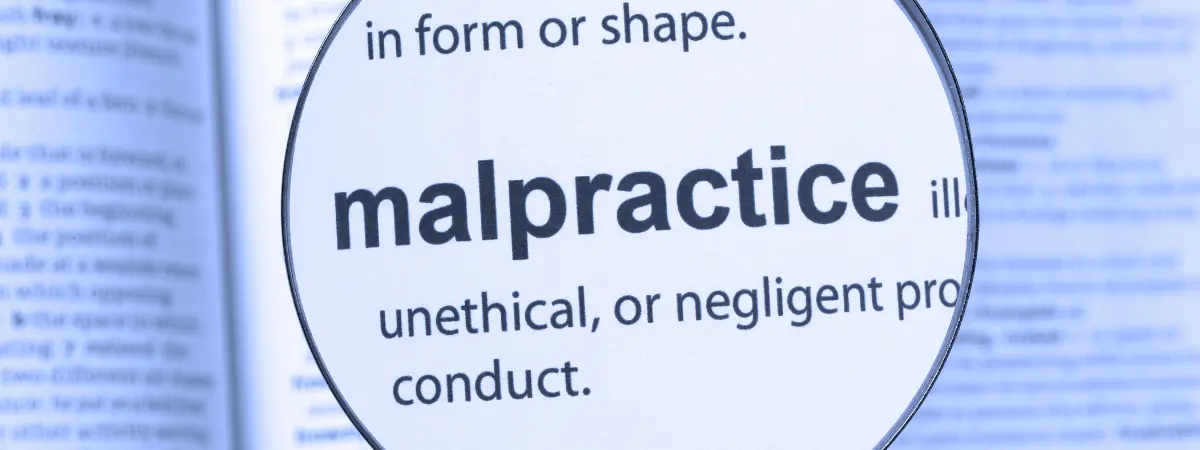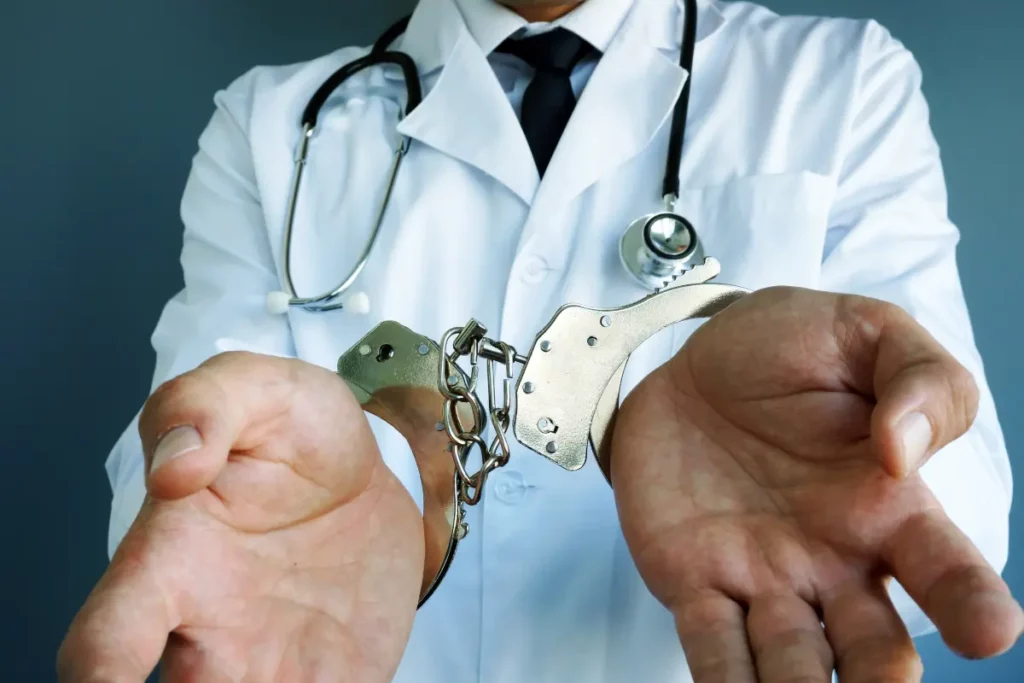Preventing medical malpractice is crucial in ensuring patients receive the appropriate care and treatment. Medical malpractice can have severe consequences for patients, making it essential for healthcare providers to take steps to prevent it.
Preventing medical malpractice requires implementing effective policies and procedures, providing appropriate training to staff, and maintaining open communication with patients to ensure their needs are met.
By addressing potential risks and ensuring that all healthcare providers are held accountable for their actions, medical facilities can minimize the likelihood of malpractice occurring and provide patients with the high-quality care they deserve.
Ultimately, preventing medical malpractice is essential to maintaining a safe and effective healthcare system that meets the needs of patients while safeguarding their health and well-being. This article will discuss medical malpractice, its different types, and ways to avoid it.
What Does Medical Malpractice Mean?
Medical malpractice refers to healthcare providers failing to provide the expected standard of care to their patients. The expected standard of care is determined by what a reasonable and prudent healthcare provider would do in similar circumstances.
If a healthcare provider’s actions fall below this standard of care, it can be considered medical malpractice. Medical malpractice is a legal term. It describes situations where patients have been harmed due to the negligence or carelessness of their healthcare providers.
The consequences of medical malpractice can be severe, resulting in physical, emotional, and financial harm to the patient. Therefore, medical practices must take necessary measures to prevent medical malpractice and ensure patient safety.
Types of Preventing Medical Malpractice
There are different types of medical malpractice, including:
Incorrect Diagnosis
Incorrect diagnosis happens when a healthcare provider fails to diagnose or incorrectly diagnoses a condition. This can result in delayed treatment or treatment for the wrong ailment, leading to further complications or harm. Healthcare providers must take appropriate steps to prevent incorrect diagnosis and ensure accurate and timely diagnosis of their patients’ conditions.
Delayed Diagnosis
Delayed diagnosis happens when a healthcare provider fails to diagnose a condition promptly. This can cause treatment to be delayed, leading to additional harm or complications.
Timely diagnosis is crucial in providing adequate medical care to patients. Healthcare providers must take necessary measures to prevent delayed diagnosis and ensure the timely and accurate diagnosis of their patients’ conditions.
Surgical Errors
Surgical errors can happen during surgery, including operating on the wrong body part or leaving surgical instruments inside the patient’s body. These errors can result in severe injuries, disabilities, or even death.
Healthcare providers must follow strict protocols to prevent surgical errors. They must verify the correct procedure and patient before beginning. All surgical instruments must be accounted for before and after the surgery.
Medication Errors
Medication errors can occur when healthcare providers:
- Prescribe the wrong medication and an incorrect dosage.
- Do not consider a patient’s allergies and other medications the patient is taking.
Such errors can result in significant harm, including overdose, allergic reactions, or adverse drug interactions. Healthcare providers must take precautions to prevent medication errors. This includes ensuring accurate and complete medical documentation, verifying the correct medication and dosage, and communicating with patients about their medications.
Anesthesia Errors
Anesthesia errors are a type of medical error that can occur during surgery when the patient is under anesthesia. Such errors can result in severe harm, including brain damage, heart attack, or even death.
Healthcare providers must take precautions to prevent anesthesia errors. This includes verifying the correct patient and the right dose of anesthesia. Additionally, vital signs must be monitored, and any adverse reactions must be responded to quickly.
Birth Injuries
Birth injuries refer to injuries that can occur during childbirth, which can affect both the mother and the child. These injuries can include nerve damage, brain damage, or broken bones. Birth injuries can occur due to various causes. These include prolonged labor, use of forceps or vacuum extractors, and medical problems in the mother or baby.
Childbirth Injuries
Such injuries may include vaginal tears, bleeding, or infections. Birth injuries can occur due to a variety of reasons. These include prolonged labor, difficult delivery, or the use of medical instruments.
Healthcare providers must take steps to prevent childbirth injuries. This includes providing appropriate prenatal care and monitoring for both the mother and child. If any complications or emergencies arise during labor and delivery, providers must act quickly.
Failure To Provide Informed Consent
Informed consent is essential for medical treatment, and healthcare providers must obtain it from their patients before providing any medical intervention. Failure to provide informed consent can result in medical malpractice.
Healthcare providers must inform their patients about the benefits and risks of a medical procedure or treatment. This process is known as informed consent. The patient must provide voluntary consent based on that information.
Medical Product Liability
Medical product liability is when a healthcare provider uses a defective medical product, like a faulty device or medicine. This leads to harm or injury to the patient. In such cases, the product’s manufacturer, distributor, or seller may be held liable for the damage caused to the patient.
Hospital Negligence
Hospital negligence is when a hospital fails to provide adequate patient care, resulting in harm or injury. This can occur due to understaffing, inadequate training, or failure to follow established safety protocols.
Hospital negligence can have serious consequences, such as injury or even death. Therefore, patients have the right to take legal action against hospitals for any wrongdoings. Hospitals need to prioritize patient safety and ensure they have the necessary resources and procedures to provide high-quality care.
Nursing Home Negligence
Nursing home negligence happens when it fails to provide appropriate care to its residents, resulting in severe harm or death. Neglecting residents’ basic needs is a form of elder abuse. These needs include providing food and water, monitoring medical conditions, and managing medication correctly. It can also include physical, emotional, or sexual abuse by staff or other residents.
10 Ways to Prevent Medical Malpractice
Maintain clear and accurate medical records. Keeping clear and valid medical records is essential to avoiding medical malpractice. Medical records should include all relevant information, such as the patient’s medical history, medications, allergies, and test results.
- Communicate effectively with patients. Healthcare providers should communicate effectively with their patients. They should explain any medical conditions or treatment options in a way that the patient can understand.
- Obtain informed consent from patients. Health care providers must obtain informed consent from patients before providing any medical treatment. Healthcare providers must inform the patient of any medical treatment’s risks, benefits, and alternatives before the patient consents.
- Monitor patients closely. Healthcare providers should closely monitor their patients and promptly address any changes in their condition.
- Practice within their scope of expertise. Healthcare providers should only provide medical treatment within their area of expertise. If a healthcare provider is not qualified to provide specific medical treatment, they should refer the patient to another qualified provider.
- Follow established protocols and guidelines. Healthcare providers should follow established protocols and guidelines when providing medical treatment. This includes using evidence based practices and following established safety procedures.
- Use technology to improve patient safety. Healthcare providers should use technology to improve patient safety, such as electronic prescribing and computerized physician order entry systems.
- Collaborate with other healthcare providers. Healthcare providers should collaborate with other healthcare providers to provide the best possible care for their patients.
- Participate in continuing education and training. Healthcare providers should take part in continuing education and training. This helps them stay informed with the latest medical developments and best practices.
- It is essential for healthcare providers to have malpractice insurance. This insurance helps to protect them against financial losses if they are sued for medical malpractice. Ensuring that the insurance policy provides adequate coverage to protect against potential claims is essential. By carrying malpractice insurance, healthcare providers can have peace of mind and focus on delivering high-quality patient care.
Final Thoughts
Medical malpractice is a serious issue that affects many people every year. Healthcare providers must take measures to prevent medical malpractice and ensure patient safety. Maintaining clear and accurate medical records, effective communication with patients, and obtaining informed consent are all essential for healthcare providers.
Additionally, they should monitor patients closely, practice within their scope of expertise, and follow established protocols and guidelines. Technology should be used to improve patient safety. Collaborating with other healthcare providers, participating in continuing education and training, and having malpractice insurance are further important requirements.
FAQs
Q1. What is medical malpractice?
Ans: Medical malpractice occurs when a healthcare provider’s negligence or carelessness causes harm to a patient.
Q2. What are the different types of preventing medical malpractice?
Ans: Different types of medical malpractice include:
- Incorrect diagnosis
- Delayed diagnosis
- Surgical errors
- Medication errors
- Anesthesia errors
- Birth injuries
- Childbirth injuries
- Failure to provide informed consent
- Medical product liability
- Hospital negligence
- Nursing home negligence
Q3. How can healthcare providers prevent medical malpractice?
Ans: Healthcare providers can avoid medical malpractice by taking several steps. These include:
- Maintaining clear and accurate medical records.
- Communicating effectively with patients and obtaining informed consent.
- Monitoring patients closely and practicing within their scope of expertise.
- Following established protocols and guidelines.
- Using technology to improve patient safety and collaborating with other healthcare providers.
- Participating in continuing education and training and carrying malpractice insurance.
Q4. What should I do if I think I have been a victim of medical malpractice?
Ans: If you think you have been a victim of medical negligence, immediate intervention is essential. Contact an attorney for medical malpractice immediately. Doing this will ensure you receive the legal help you need. They can help you understand your legal rights and options.
Q5. Can healthcare providers be liable for medical malpractice if they follow all the proper protocols and guidelines?
Ans: Healthcare providers can still be held liable for medical malpractice even if they follow all the proper protocols and guidelines. Medical malpractice lawsuits are based on the standard of care. This standard is based on what a reasonable and prudent healthcare provider would have done in similar circumstances.





